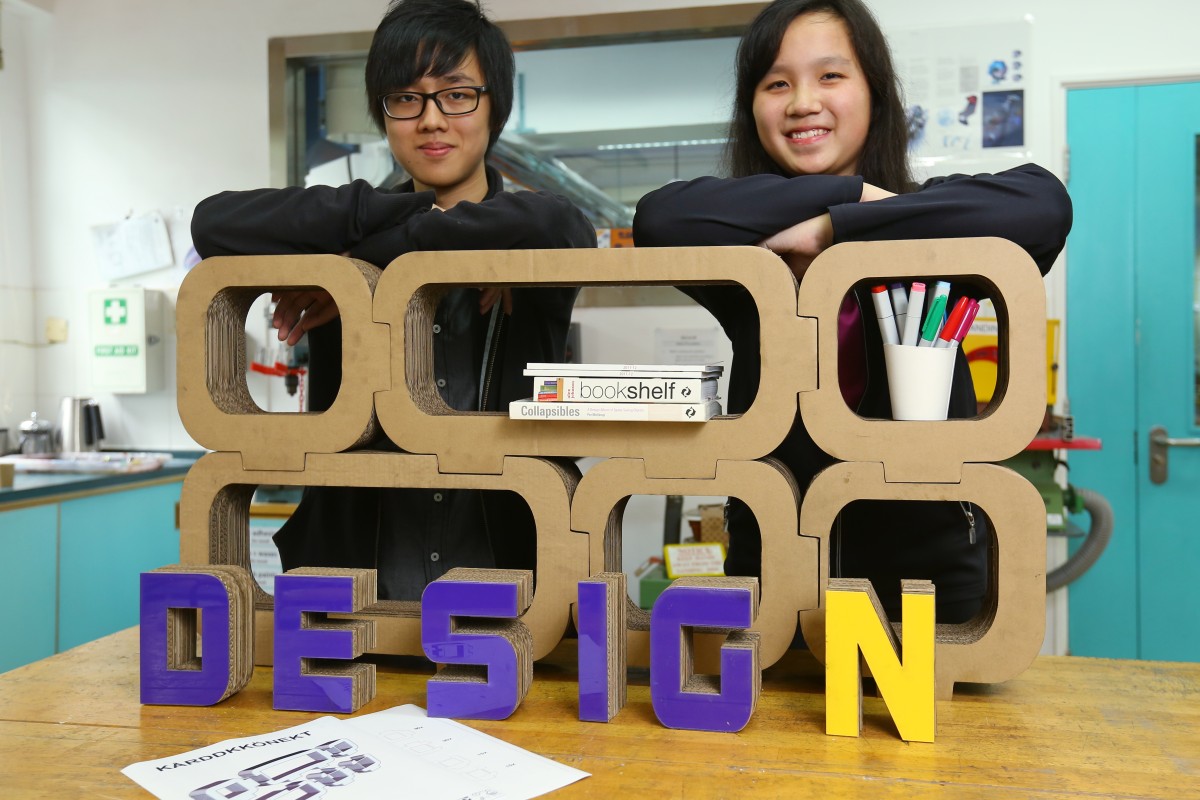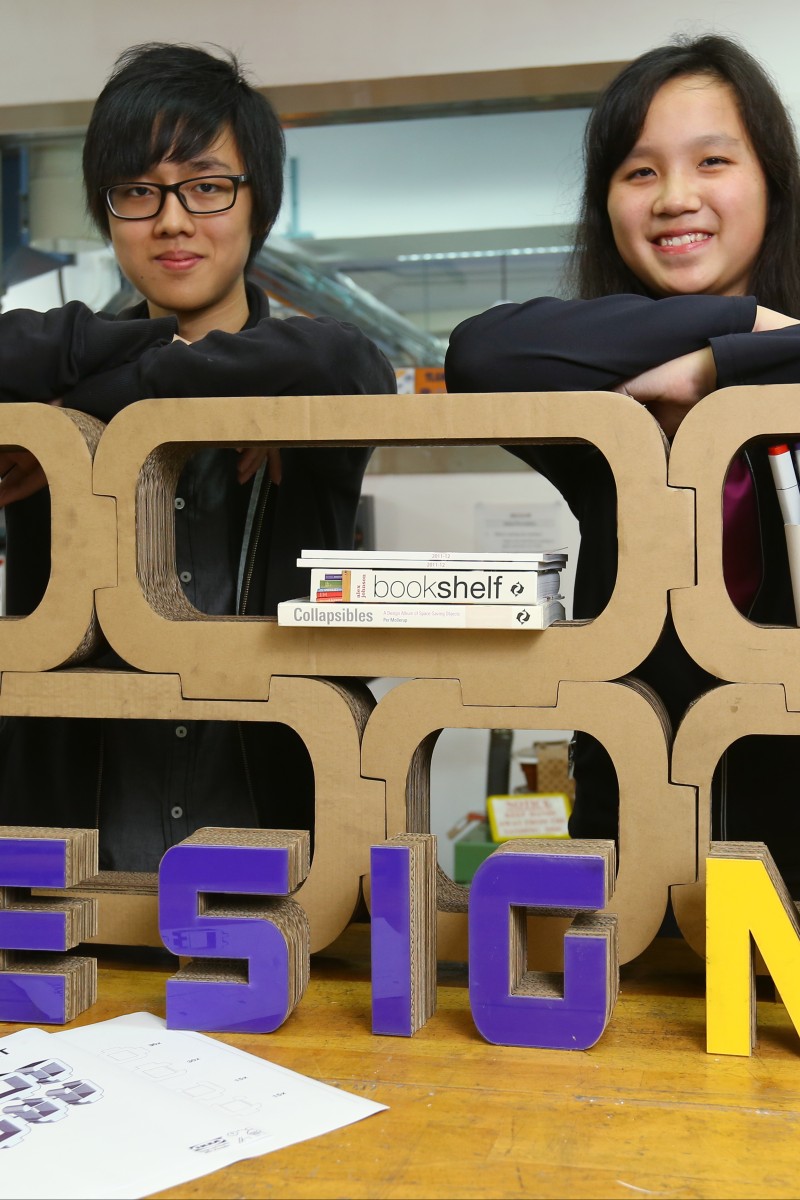 Jonathan Li (Left) Natasha Siu make bookcases fun.
Jonathan Li (Left) Natasha Siu make bookcases fun.At first glance the design and technology studio classroom at Sha Tin College looks messy. But a closer look shows that all the papers strewn across the tables are actually blueprints, sketches and plans, alongside tiny models. And while the piles of cardboard in the corner might look like discarded rubbish, they reveal a surprise when unfolded.
These piles of cardboard are the product of the latest class project for the Year 12 students. The project is called "Furnigami". Just as a simple piece of paper can be transformed with origami, the students have transformed leftover cardboard into functional pieces of useful furniture.
"It felt like a pretty cool idea," says Thomas Swift as he and his design partner Ashley Man show off the coffee table they made. It stands sturdily despite being built with only slotted-together pieces of cardboard. "We worked in pairs. We worked on design, we worked on making things, and it was pretty cool."
For the project, the students had to come up with a unique design which was also functional and strong. Olivia Drave, who designed a four-tiered table with partner Lisa Cooley, says the creative process for the project was surprisingly challenging. "I think the hardest part for me was to find a design that didn't already exist and to create something that was original," Olivia says. "A lot of our inspiration came from existing designs, so it was very hard not to just go ahead and plagiarise somebody else's work."
Jaybe Bae and Timothy Liu found the inspiration for their modular bookcase in nature. "We actually didn't have an idea at first," Jaybe admits. "And then I just started looking at structures built from nature, and I came across the beehive. And I found one of the safest structures in nature. So we decided to use that idea and make it into a product that can actually withstand weight and is durable."
But while the students may have had a specific idea in mind when they started, they soon learned the importance of flexibility in the design process. Samantha Elaine Harlow and Heather Lau sit in front of a refined-looking coffee table: while the end product might look simple, the process certainly wasn't. "Our design constantly changed throughout the whole manufacturing process," says Samantha. "One of the main things we learned is that you're not finished until you're actually finished."
And it's this process of adapting to challenges which the students found most valuable. Lau Yee-lok and Julietta Lai sit in front of their minimalist end-table and discuss how rare it is to have such an opportunity. "I don't think that some students have the options that we have to pursue an art course or a design course," Yee-lok muses. "I think more students in Hong Kong should have the opportunity to go through this process because it lets everyone express themselves in their own way."
Julietta agrees: "It's not just being creative or drawing or designing things, it's about solving problems."
Jonathan Li, who designed a modular bookcase with partners Natasha Siu and Andrea Li, says the biggest challenge is the way Hongkongers look at art and design. "I think in Hong Kong society, we're more practical and pragmatic," he says. "Our parents think design and art is just playing around."
"It's a different course to what is normally offered in Hong Kong," adds Natasha. "But I think it's definitely something that should be offered. Because you don't just learn about creativity and you don't just focus on that. It's also about the process and working in a team as well."
As the students are quick to point out, the teamwork and collaboration skills that they needed for the projects are skills that transfer easily to other disciplines. "It builds a person," says Yee-lok. "It teaches you how to think by yourself and for yourself. It goes along with the critical process and it makes you think of things in a different way."
